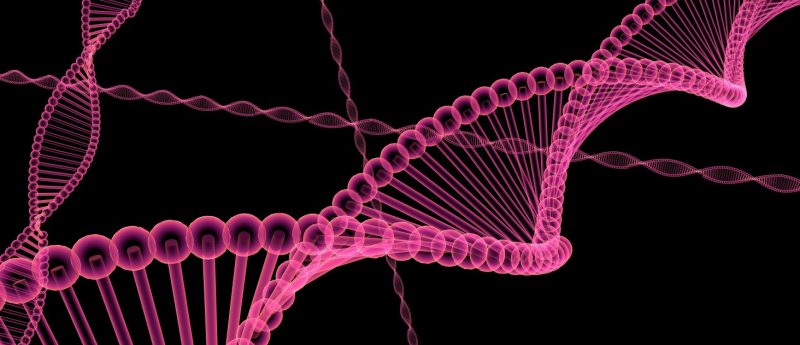CRISPR treatment of adult mouse model demonstrates potential gene therapy for Duchenne muscular dystrophy

CRISPR gene editing has independently been used by scientists from UT Southwestern Medical Center (TX, USA), Duke (NC, USA) and Harvard University (MA, USA) to successfully prevent progression of Duchenne muscular dystrophy in an adult mouse model — the first time it has successfully treated a genetic disease inside a fully developed living mammal.
Duchenne muscular dystrophy (DMD) is a fatal genetic disease affecting 1 in 3500 to 5000 newborn boys that results in the permanent need for a wheelchair by age 10 and death by 20s or the early 30s — the most common and severe form of muscular dystrophy among boys. It is characterized by progressive muscle degeneration and weakness as a result of mutations in the X-linked DMD gene encoding the protein dystrophin, which binds the interior of a muscle fiber to its surrounding support structure.
Three groups of researchers — from UT Southwestern Medical Center (TX, USA), Duke (NC, USA) and Harvard (MA, USA) — have used the gene-editing technique CRISPR/Cas9 to correct the disease-causing mutation in a mouse model of DMD and therefore treat the disease.
The UT Southwestern researchers permanently corrected the mutation by using the adenovirus AAV9 to deliver the gene-correcting CRISPR components into postnatal mdx mice, a model of DMD. This resulted in restored dystrophin protein expression in cardiac and skeletal muscle to varying degrees and enhanced skeletal muscle function, measured by grip strength tests 4 weeks post-injection.
“AAV9 can efficiently infect humans in a tissue-specific manner, but it does not cause human disease or toxicity. It’s a molecular missile for gene therapy,” said Dr Leonela Amoasii, a postdoctoral researcher in the laboratory of Dr Eric Olson, senior author of the UT Southwestern paper.
Duke also used an adeno-associated virus system to deliver the CRISPR/Cas9 system to their mdx mouse, resulting in partial recovery of functional dystrophin protein in skeletal myofibers and cardiac muscle, improvement of muscle biochemistry and significant increase in muscle force. “A major hurdle for gene editing is delivery. We know what genes need to be fixed for certain diseases, but getting the gene editing tools where they need to go is a huge challenge,” said Dr Chris Nelson, an author of the Duke paper.
Both teams therefore established the CRISPR/Cas9-based genome editing may be a potential method of treating DMD in humans after birth if it can be efficiently and safely scaled up in DMD patients. “…In principle, the same strategy can be applied to numerous types of mutations within the human DMD patients,” explained UT Southwestern’s Dr Olson.
The work at Harvard differed slightly to the other two groups. Using the same system, Dr Amy Wagers looked specifically at whether the gene-altering virus infected muscle stem cells, as treating stem cells could offer a more permanent solution than treatment of differentiated muscle cells. The team found that it could, and treatment resulted in partially recovered muscle functional deficiencies and a pool of endogenously corrected myogenic precursors.
Commenting on the road ahead, Duke author Dr Charles Gersbach explained: “There is still a significant amount of work to do to translate this to a human therapy and demonstrate safety … But these results coming from our first experiments are very exciting. From here, we’ll be optimizing the delivery system, evaluating the approach in more severe models of DMD, and assessing efficiency and safety in larger animals with the eventual goal of getting into clinical trials.”
Further work could also include applying the same method for the treatment of other monogenic disorders.
Sources: www.utsouthwestern.edu/newsroom/news-releases/year-2015/dec/duchenne-muscular-dystrophy-olson.html; http://today.duke.edu/2015/12/crisprmousedmd; Chengzu Long, Leonela Amoasii, Alex A Mireault, John R McAnally, Hui Li, Efrain Sanchez-Ortiz, Samadrita Bhattacharyya, John M Shelton, Rhonda Bassel-Duby, Eric N Olson. Postnatal genome editing partially restores dystrophin expression in a mouse model of muscular dystrophy. Science doi:10.1126/science.aad5725 (2015); Christopher E Nelson, Chady H Hakim, David G Ousterout, Pratiksha I Thakore, Eirik A Moreb, Ruth M Castellanos Rivera, Sarina Madhavan, Xiufang Pan, F Ann Ran, Winston X Yan, Aravind Asokan, Feng Zhang, Dongsheng Duan, Charles A Gersbach. In vivo genome editing improves muscle function in a mouse model of Duchenne muscular dystrophy. Science doi:10.1126/science.aad5143 (2015); Mohammadsharif Tabebordbar, Kexian Zhu, Jason KW Cheng, Wei Leong Chew, Jeffrey J Widrick, Winston X Yan, Claire Maesner, Elizabeth Y Wu, Ru Xiao, F Ann Ran, Le Cong, Feng Zhang, Luk H Vandenberghe, George M Church, Amy J Wagers. In vivo gene editing in dystrophic mouse muscle and muscle stem cells. Science doi:10.1126/science.aad5177 (2015).